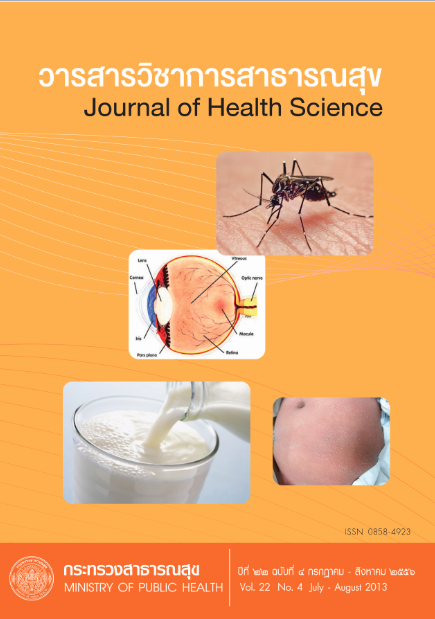School Milk: Causing Food Poisoning Outbreaks, Nakhon Pathom Province, Thailand, August 2011
Keywords:
school milk, food poisoning in school, Bacillus cereus food poisoningAbstract
Since Thai government has provided milk to students in 1992 and expanded to cover all in kindergartens and grade-6 in 2009, frequent multi-school outbreaks of food poisoning were reported. Following a notification of food poisoning in 250 students in Nakhon Pathom Province, an investigation was conducted to identify a cause and risk factors. Active case finding and medical record reviews were done. Milk factory managers, milkmen, teachers and students were interviewed. A retrospective cohort study was conducted. Milk transportation and milk factory inspected. Stool and milk samples were tested for etiologic agents at Thai National Institute of Health. The results showed, among 1,771 students in 5 affected schools, 221 (13%) met case definition. Main clinical manifestations were upper gastrointestinal symptoms (79%), abdominal pain (84%) and vomiting (48%). School milk was identified as an implicated food item (adjusted OR=29.1, 95%CI=3.9, 216.3) with dose-response relationship. Bacillus cereus was found in 75 percent of milk samples. Transportation means had been changed from ice-boxes to refrigerated trucks. Milk transportation model showed that working temperature inside the trucks was consistently high (>8oc). This outbreak was caused by B. cereus contaminations in school milk. The pitfall was the ineffective cold chain of milk distribution. Following this outbreak finding, stakeholders met and agreed on several preventive measures, for examples milk factory team must ensure an adequate amount of ice in the refrigerated truck before distribution of milk, and health workers or teachers should randomly check the temaperature in ice-box at schools.
Downloads
Downloads
Published
How to Cite
Issue
Section
License
Copyright (c) 2017 Journal of Health Science- วารสารวิชาการสาธารณสุข

This work is licensed under a Creative Commons Attribution-NonCommercial-NoDerivatives 4.0 International License.







